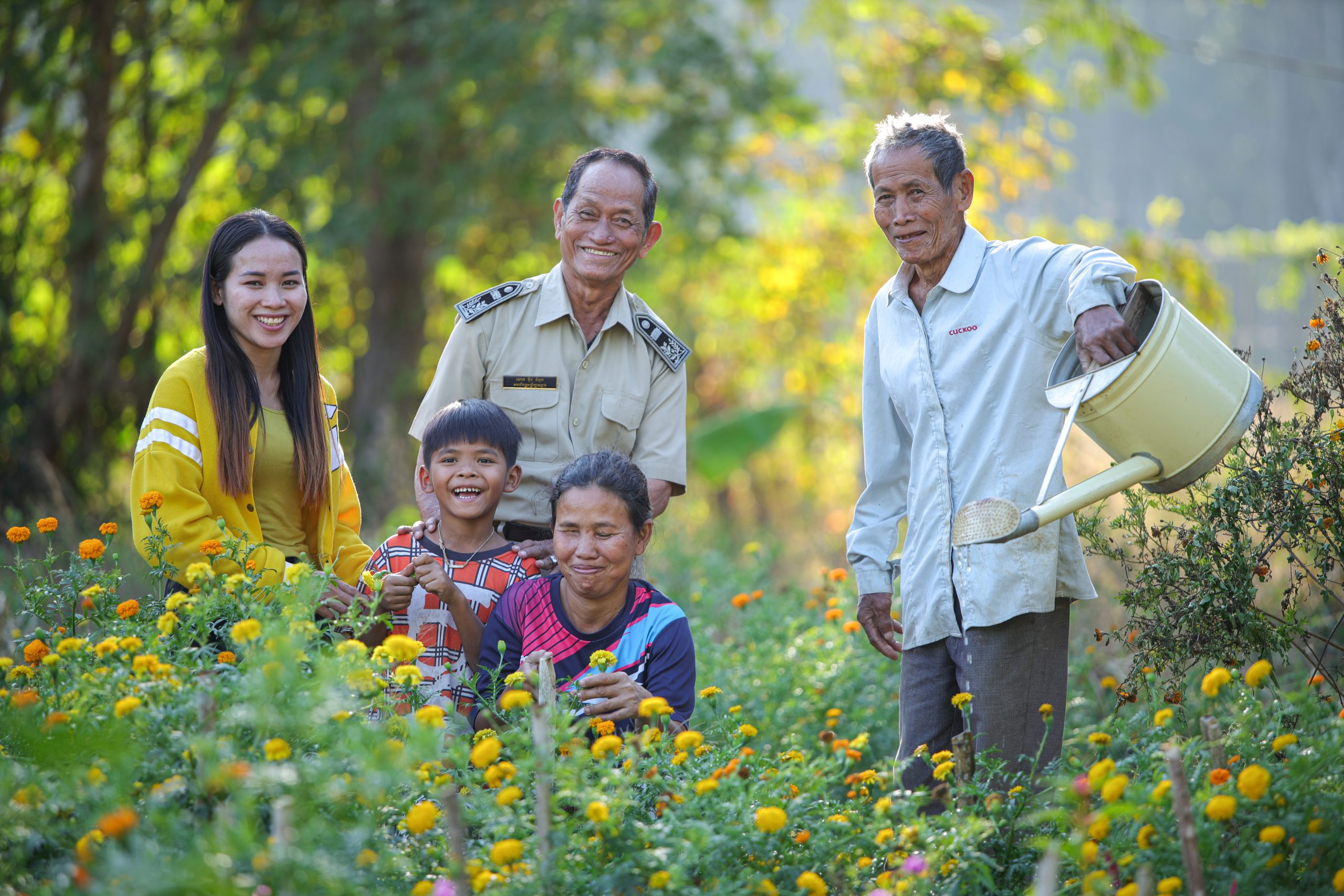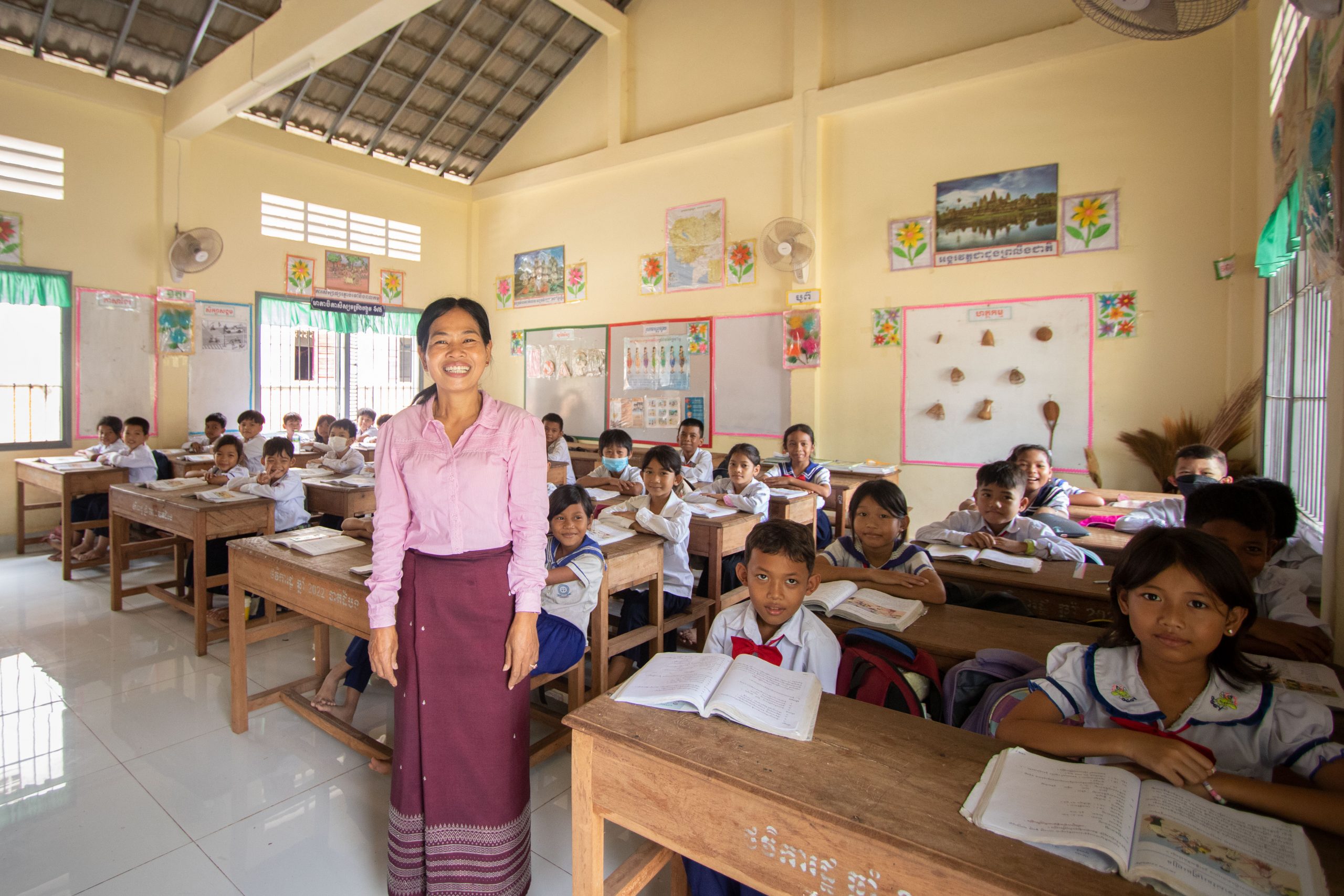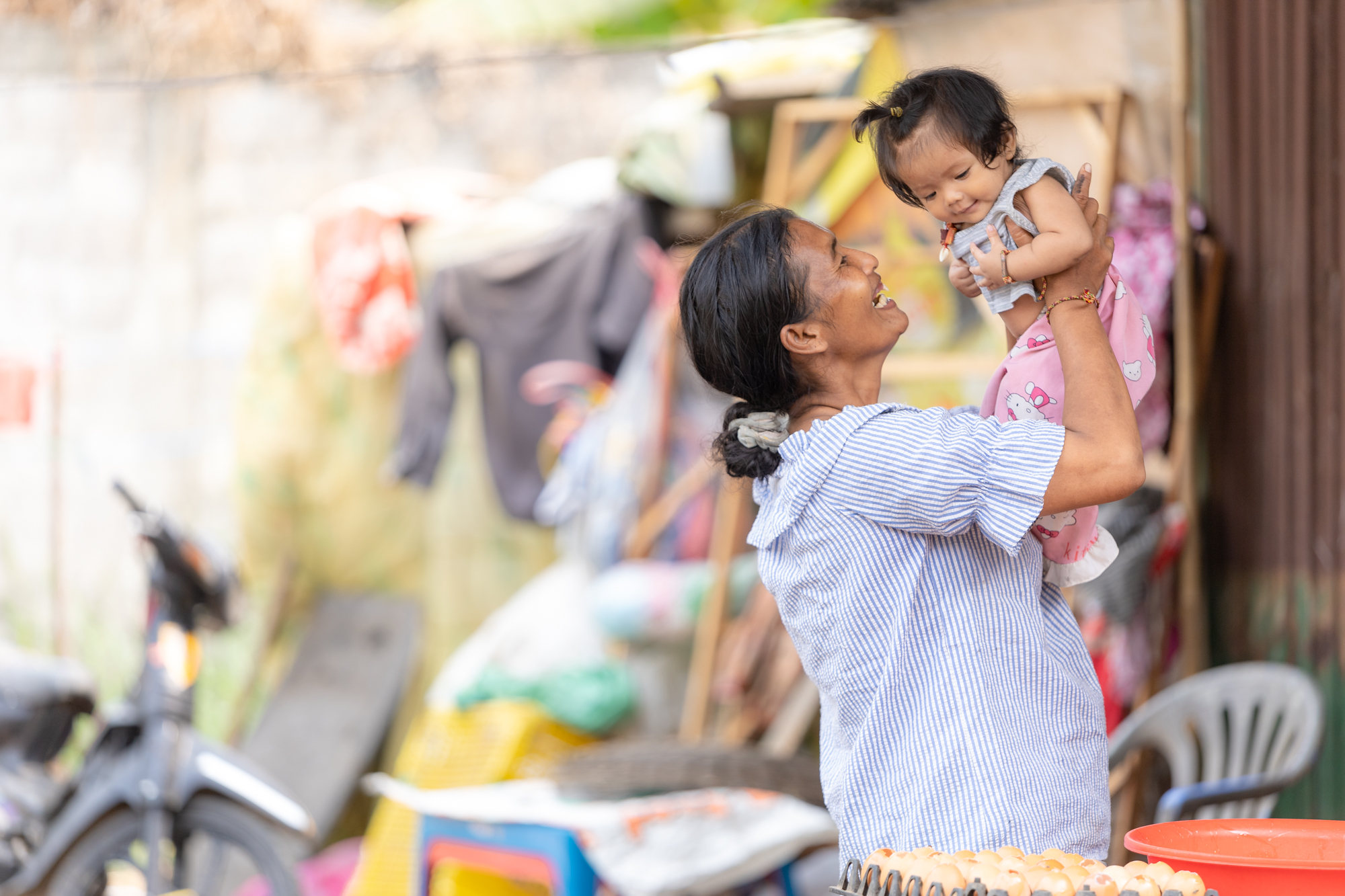Localisation has become one of the most talked-about priorities in international development, with broad agreement that empowering local actors is essential for sustainability. Yet there is far less agreement on what localisation actually means in practice and how to do it well.
The urgency of this debate has sharpened in recent months. With the sudden demise of USAID, the fragility of the current aid architecture has been laid bare. If we are to build a stronger, more resilient system, we must be clear-eyed about what localisation really is, what it isn’t, and what needs to change to address entrenched power imbalances and shift control back to local communities.
Some argue that the sector is making meaningful strides in localising. Others contend that much of the localisation agenda has been a surface-level shift in language, which merely rebrands business-as-usual with a veneer of local ownership. The stakes could not be higher! The answers to these questions will shape how the sector decolonises, rebuilds trust, and delivers sustainable development in the years ahead.
The Village Hive model in Cambodia offers a provocative test case. Co-designed with communities and embedded within public systems, the Village Hive catalyses a movement from grassroots to national level to integrate NGO programs into the public sector. In 2025, it was adopted by the Cambodian government as the national framework for social protection. The model has been recognised with the ASEAN Award for Outstanding Social Welfare and Development. It underscores a cornerstone question at the heart of our sector: what is the most effective path to genuine localisation in international development?
What is the Village Hive?
The Village Hive is a community-led model of social protection pioneered in Battambang, Cambodia by Cambodian Children’s Trust (CCT). It unites local government, community networks, and public services into a coordinated hub that empowers vulnerable families, prevents family separation, and addresses child protection risks before they become crises.
Built on a three-tiered, upstream approach, the model tackles the complex, interwoven dimensions of poverty by prioritising Universal Prevention and Early Intervention. This creates a robust social safety net that raises living standards and lifts whole communities out of poverty.
Rather than operating parallel NGO programs, the Village Hive integrates services into the public system, ensuring local ownership, government leadership, and long-term sustainability. Its adoption as Cambodia’s national model marks a shift from NGO-dependent aid to locally owned systems that endure beyond external funding cycles.
How does the Village Hive decolonise development?
At its heart, decolonisation in development is about dismantling systems where foreign NGOs and donors control resources, priorities and decision-making in another country. The Village Hive is decolonisation in practice. The Village Hive dismantles dependency, strengthens sovereignty, and ensures Cambodian families are supported by Cambodian systems, not foreign charities.
Instead of the current system, where foreign-controlled charities offer privatised programs, the Village Hive invests in strengthening Cambodia’s own public systems. That means supporting local commune councils, public schools, public health clinics and public workforce social workers to deliver social protection services. It’s a move away from the colonial pattern of foreigners imposing structures that override and replace local governance, while creating dependency on foreign-funded NGOs.
The Village Hive recognises that solutions already exist within the community, and that the role of international partners should be to resource and amplify those solutions, not dictate terms. Decolonisation here means replacing the charity-as-saviour narrative with solidarity and system-building. By embedding CCT’s private programs and staff into government systems, the Village Hive avoids the extractive pattern of foreign NGOs coming and going, creating a fragmented system with no cohesive agenda. It creates infrastructure that will last, managed and governed by local leaders.

Village Hive, Cambodia. Source: Cambodian Children’s Trust (CCT)
How do we define localisation?
“Localisation” is a slippery term in international development. Different actors use it to mean quite different things, which is why it often gets muddled. Here’s a breakdown of the main definitions.
Funding localisation: Often defined by donors as increasing the percentage of aid money that flows directly to “local NGOs” rather than being channelled through big international NGOs. This can mean counting local NGOs as “local actors” even if they are heavily controlled and shaped by foreign agendas.
Implementation localisation: Where international organisations maintain control over strategy, priorities, and finances, but contract local NGOs to deliver the services. This is little more than outsourcing labour while keeping decision-making power offshore.
Representation localisation: Having local staff in leadership positions within INGOs or setting up national offices, but with governance, budgets and strategy still decided in the Global North.
Geographic localisation: Moving INGO headquarters or foreign staff from the Global North to the Global South and rebranding as “localised,” but with power, governance and decision-making still held by international actors. The same foreign staff are flown out and now live in the Global South, but they still hold the passports, salaries, and privileges of international elites. Decision-making stays centralised in the INGO, but it has been relocated. Meanwhile, local communities or governments don’t gain more voice or sovereignty. It’s a geographic sleight of hand rather than a real shift in power.
Most definitions of localisation in international development are tokenistic smoke and mirrors that the international development sector uses to claim progress while retaining control. At its core, localisation should be a matter of power – who is in control and who is making the decisions. Power never truly shifts if it remains within the orbit of foreign-controlled NGOs and donors. The only way to create lasting change is to build robust social welfare services within the public system, where the roots of control are inherently local.
The Village Hive reframes the conversation away from localisation as an aid-industry target and toward public system strengthening as the actual goal. Having Cambodians at the helm is a given, but the model goes further than staffing optics: it’s about integrating prevention and early intervention services, previously delivered by NGOs, into local public structures so that responsibility and decision-making sit with local leaders.
What are the systemic barriers to shifting power to achieve genuine localisation?
The biggest barriers to genuine localisation are ideological. The international development sector was built on a mindset of empire-building, where organisations grow their own brands, programs and infrastructure that they operate privately in parallel to public systems. Shifting to a deeper, more humble focus on solving the root causes of problems in the Global South requires that those same organisations let go of the structures that keep their own names alive. That’s uncomfortable, because it means losing the ability to stake a claim and say: “This is our school, our centre, our program.” Yet that loss of ownership is precisely the point. When projects blend seamlessly into public systems, the logo may fade, but what remains is far more powerful: a lasting solution owned by the community itself.
Another ideological barrier is the concern over local corruption. Too often, there’s a reflexive assumption that people in the Global South can’t be trusted to run their own affairs. But corruption is not inherent to a culture or the nature of the people; it is simply a symptom of flawed systems. The Village Hive model proves that certain systems can be strengthened, with strong checks and balances, clear financial frameworks and zero-tolerance policies for fraud. In this way, the Village Hive is an initiative that actively combats corruption, proving it is not an insurmountable issue.

Village Hive, Cambodia. Source: Cambodian Children’s Trust (CCT)
How and why has the Village Hive model been suggested to be too radical? And can localisation ever actually be radical – or does that just mean it is working?
The Village Hive can be seen as radical because it asks the international development sector to do something it is fundamentally resistant to: work towards its own redundancy. Most charities are built on a model of visibility, ownership and brand survival. A system that deliberately blurs boundaries, folds projects into government structures, and relinquishes the right to say “this is ours” challenges the very DNA of the sector. That’s unsettling for organisations that have no intention of relinquishing control and working themselves out of a job.
When localisation does appear “radical,” it usually just means it has finally started to work as intended: shifting real authority to local hands, where it belongs. At that point, it stops being localisation as the sector defines it, and starts to look much more like decolonisation.
Funding genuine localisation
Localisation and decolonisation do not mean abandoning financial support. It means rethinking where that support goes and how it is used. Ultimately, the most decolonised version of aid would be reparations: a fair return of resources to the Global South in recognition of the extreme siphoning of wealth to the Global North since colonisation. In lieu of true reparations, it remains critical to ensure that funds continue to flow, and flow generously, toward localisation models that actually work. Investment in locally owned public systems is not charity, but justice, and the surest path to sustainable development.
Conclusion
The Village Hive model represents a case of localisation taken to its logical endpoint, where the goal is not to rebrand aid but to truly shift power by embedding solutions within public systems to create a robust social protection system that ultimately eliminates Cambodia’s dependency on NGOs.
Cambodia is not alone in this pursuit. Costa Rica, still technically classified as a developing country, offers a powerful example of what upstream, preventative public systems can achieve. Costa Ricans enjoy longer life expectancy and far lower rates of middle-age mortality than countries in the Global North, while spending just one-fifteenth of what Western countries allocate to healthcare. At the heart of their success, as one of the world’s five Blue Zones, is a public health model anchored in community.
Costa Rica provides further evidence that organisations investing in public infrastructure rather than building parallel programs – such as the Australian Himalayan Foundation, the Global Partnership for Education, Living Goods, and the Malaria Consortium – hold the key to localised and truly sustainable development.
Yet forging into uncharted territory inevitably means ‘building the car while driving it’, and despite early success, there is still much work ahead to determine the most effective path to a public social protection system in Cambodia that is not dependent on NGOs. The question of what constitutes the most effective path to localisation in development therefore remains open.
Moving forward, the debate must be honest and unflinching, free from branding exercises and surface-level reforms. I look forward to continuing this conversation in person at the upcoming AIDN event series on the future of localisation.
 Tara Winkler is a social entrepreneur and systems change leader whose work has helped transform child protection internationally.
Tara Winkler is a social entrepreneur and systems change leader whose work has helped transform child protection internationally.
She co-founded Cambodian Children’s Trust (CCT) in 2007 to rescue children from an abusive orphanage. Under her leadership, CCT became the first organisation in Cambodia to close its orphanage and transition children back into family-based care, sparking the country’s care reform movement. In 2019, she and her team launched the Village Hive Project to address the root causes of family separation and strengthen public systems. In 2025, the Cambodian government adopted the Village Hive as the official national framework for social protection, now being rolled out nationwide.
Her work has been featured on ABC’s Australian Story, 60 Minutes, and international outlets. She is the author of How (NOT) to Start an Orphanage and her TED Talk, “Why we need to end the era of orphanages”, has informed global debates on child protection and continues to be used in training and advocacy around the world.
Feature image: Village Hive, Cambodia. Source: Cambodian Children’s Trust (CCT)
